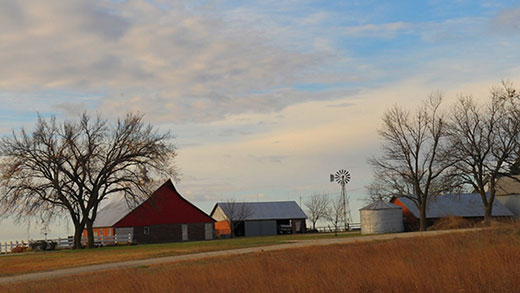Fall harvest is in full swing on our central Kansas farm.
Our dryland and irrigated field corn has all been picked and all that’s left in those fields are corn stalks and a lot of dry organic material that was kicked out the back end of a combine.
The only corn remaining in the middle of one of these recently harvested fields is our popcorn crop.
We baby our popcorn like no other crop on our farm. It is strategically planted in areas near windbreaks that will hopefully help protect the plant from the brutal winds we sometimes experience. It’s always planted on irrigated acres to ensure it gets the water it needs during the growing season. It also receives the most verbal affirmations and words of encouragement from me during the growing season compared to any of our other crops. And it’s the crop that generally tests my patience and my nerves the most as harvest time is determined by a very narrow range of moisture present within the grain.
If field corn is cut a little too wet, the elevator will pay a little less for it and you move on. If the popcorn is a little too wet, the popcorn won’t pop, thus defeating the purpose of growing popcorn. Making sure we harvest the popcorn within that tiny window of acceptable moisture levels literally determines whether or not we have popcorn available for our customers for the next year.
As we get closer to popcorn harvest, I tend to worry about a potential rain that could flood the field. During my time on the farm, we have had instances where heavy rains have flooded shut the roads and flooded fields of sorghum and field corn in water so deep we’ve been able to kayak in it.
The potential for a heavy downpour in the fall always enters my mind as we get closer and closer to the popcorn harvest.
The potential threat of a flood had me overlooking a more obvious threat – especially with it being so dry out here: fire. I was completely caught off guard when we recently received a phone call late one night from a neighbor who had noticed flames in a corn field. He wanted to know if it was a planned burn. It, in fact, was not a planned burn!
Phone calls were made to 911 as my husband drove off to get a tractor and disc while I drove off to meet my father-in-law in the field.
As I approached the popcorn field, the growing glow ahead of me confirmed we were not going to be able to snuff out this fire with a couple of shovels.
Soon sirens could be heard in the distance coming down our rural roads all enroute to our location. Those emergency trucks and water tankers and even personal vehicles responding to the fire were all driven by volunteers. It’s amazing how quickly they all responded and helped put out the fire – especially considering many of them are coming from their own farms located throughout the countryside in every direction.
This team of volunteers quickly drove through the field and extinguished the flames spreading through the corn stalks. When it was all said and done, the popcorn was spared with the fire line just a few hundred feet away from the start of the popcorn rows.
I’m thankful for the willingness of these men and women who serve their neighbors and assist in times of emergencies whether it be day or night. This wasn’t the first time we’ve needed help from emergency responders, and it probably won’t be the last time either. But this event reaffirmed my appreciation for the helpers in our community who are willing to assist their fellow rural neighbors. Afterall, if we didn’t have these organized and trained volunteers available and willing to help, who would?
They sacrifice their time and resources at the drop of a hat when an emergency call goes out to help save or protect people and property.
Neighbors helping neighbors – it’s part of what makes rural America such a special place.
_ _ _
Kim Baldwin is a McPherson County farmer and rancher



